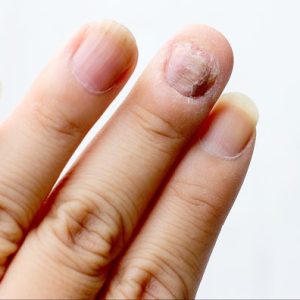Medrose Medical Center | Barsha Heights, Tecom
ما هى التهابات الأظافر الفطرية؟
Nail fungus infection, also known as onychomycosis, is a common condition caused by a fungus that invades the nails, causing discoloration, thickening, and crumbling of the nails.
Reasons:
Fungal infections are most often caused by dermatophytes, a group of fungi that thrive in warm, moist environments. Other types of fungi, such as yeast or mold, can also cause nail infections. Common risk factors include walking barefoot in public, sharing personal items such as nail clippers or shoes, having very sweaty feet, or having a weakened immune system.
Nail fungus infections can mimic other conditions such as nail psoriasis, dermatitis, or bacterial infections. To make an accurate diagnosis, a health professional will perform a physical examination and take a sample of the nail for laboratory testing or other diagnostic methods.

Treatment :
Treatment options for nail fungus include topical antifungal ointments, oral antifungal medications, or both. In some cases, it may be necessary to remove part or all of the infected nail.
Treatment takes several weeks or months, as new, healthy nails grow in place of the infected nail.
Prevention:
To help prevent nail fungus infections, it is recommended to follow these tips:
- Keep nails clean, dry and trimmed regularly.
- Avoid walking barefoot in public places, especially in damp environments such as swimming pools or locker rooms.
- Wear breathable socks and shoes and alternate shoes to allow them to dry completely between uses.
- Use antifungal powders or sprays in shoes and on feet if you have sweaty feet.
- Avoid sharing personal items such as nail clippers or shoes.
If you suspect you have a fungal nail infection, it is recommended to consult a healthcare professional or dermatologist for an accurate diagnosis and appropriate treatment plan.

